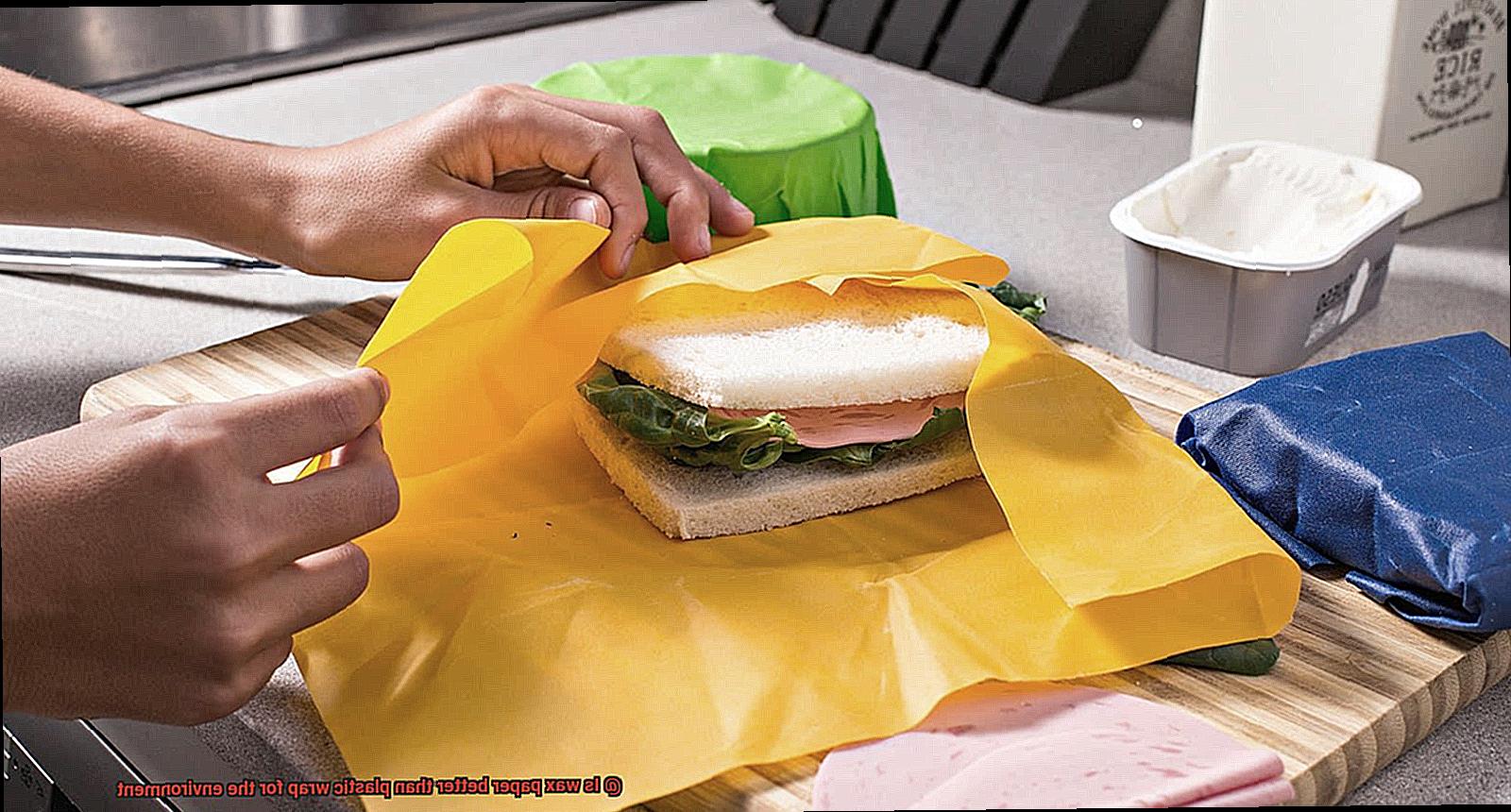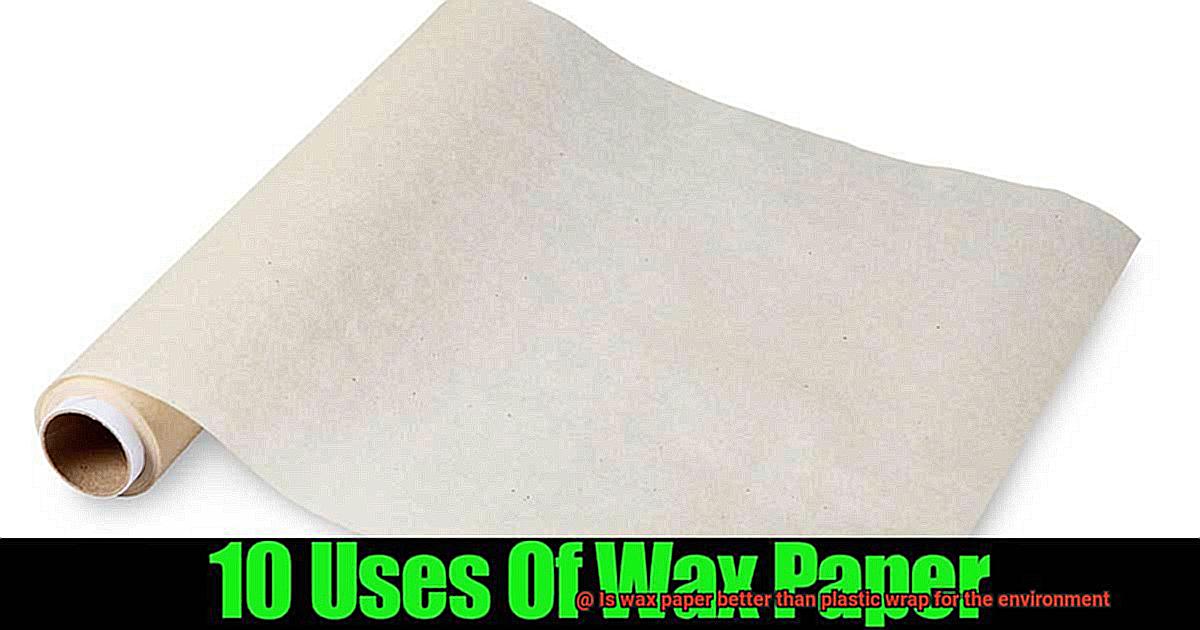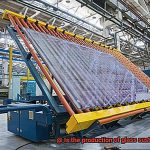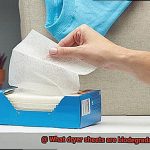Have you ever stopped to think about the impact of plastic wrap and wax paper on the environment? These kitchen essentials are used to store leftovers, pack lunches, and wrap food items. But have you considered the damage they can cause to our planet?
The debate over whether wax paper is better than plastic wrap for the environment has raged on for years. While both products effectively preserve food and prevent waste, their impact on the environment cannot be ignored. So what makes wax paper a better choice?
Wax paper is made from renewable materials – paper coated with a thin layer of wax. This makes it biodegradable and compostable, making it less harmful to the environment than plastic wrap. In contrast, plastic wrap is made from non-renewable resources and is not biodegradable, meaning it will linger in landfills for centuries.
But that’s not all – most plastic wrap cannot be recycled due to its composition, while wax paper can be composted or recycled, making it a more sustainable option for our planet. Plus, most plastic wraps end up in landfills where they harm both wildlife and the environment.
By choosing wax paper over plastic wrap, you are taking a small but significant step towards protecting our planet. So next time you reach for that roll of plastic wrap or wax paper in your kitchen drawer, remember that your eco-conscious decision can make a big difference in preserving our planet’s health.
Overview of Wax Paper and Plastic Wrap
Contents
Let’s explore the advantages and disadvantages of these materials.
Wax paper is composed of paper coated with a thin layer of wax. This coating makes it biodegradable and compostable, allowing it to break down naturally without causing harm to the environment. As a result, wax paper is an eco-friendly option that can be added to a compost pile along with other organic materials. However, it is essential to note that wax paper should not be used in the microwave or oven as its wax coating can melt and become a fire hazard.
In contrast, plastic wrap is made from polyethylene, a type of plastic that takes hundreds of years to decompose. When plastic wrap ends up in landfills or oceans, it can release harmful chemicals that can harm wildlife and damage ecosystems. Additionally, most plastic wrap cannot be recycled, which means it will end up in landfills. Due to these factors, using plastic wrap contributes significantly to environmental pollution.
When it comes to production, wax paper requires less energy and resources compared to plastic wrap. The process involved in producing wax paper is relatively simple and does not require as many chemicals or fossil fuels as plastic wrap production. Additionally, wax paper can often be reused multiple times before being disposed of, making it a more eco-friendly option compared to single-use plastic wrap.
Environmental Impact Comparison
Look no further than wax paper. As an expert in this area, I can tell you that wax paper is a much better choice for the environment than plastic wrap.
First, let’s consider the manufacturing process. Wax paper is made from wood pulp and a thin layer of wax, which comes from sustainably managed forests. This means that it’s a renewable resource that doesn’t contribute to deforestation. On the other hand, plastic wrap is made from non-renewable resources like crude oil and natural gas, which are not only finite but also require a significant amount of energy to produce. This production process contributes to greenhouse gas emissions and other environmental issues.
Next, let’s talk about disposal methods. Wax paper can be easily disposed of in compost or recycling bins, making it a more environmentally friendly option compared to plastic wrap. However, keep in mind that it cannot be recycled if it has come into contact with food waste or grease. In contrast, plastic wrap cannot be recycled at all and often ends up in landfills where it takes hundreds of years to decompose.
Lastly, let’s discuss biodegradability. Wax paper is biodegradable and will break down naturally over time when exposed to air, moisture, and microorganisms. This means that it doesn’t pose long-term environmental threats like plastic wrap does. Plastic wrap remains in landfills for hundreds of years without decomposing or breaking down, contributing to pollution and harming wildlife.

Production Process Comparison
Look no further than wax paper. As an expert in the field of production process comparison, I’m here to highlight the differences between the production processes of wax paper and plastic wrap, and their respective environmental impacts.
Wax paper is made by coating paper with wax, usually paraffin wax, derived from crude oil. The process involves melting the wax and then applying it to the paper using rollers or brushes. Once cooled, the paper is cut into sheets or rolls. In contrast, plastic wrap is made from polyethylene, a petroleum-based polymer. Crude oil is cracked into smaller molecules, which are then processed into polyethylene pellets. These pellets are melted and extruded into thin sheets, which are then cooled and cut into rolls.
While both materials rely on non-renewable resources, namely crude oil, the production process of wax paper requires less energy than plastic wrap because wax can be melted at a lower temperature than polyethylene. Additionally, plastic wrap results in more greenhouse gas emissions than wax paper due to its higher energy requirements during production.
It’s important to note that the end-of-life disposal methods for these materials also play a significant role in their environmental impact. Wax paper is easily disposed of in compost or recycling bins and is biodegradable. On the other hand, plastic wrap cannot be recycled at all and harms wildlife by remaining in landfills for hundreds of years without breaking down.
Reusability of Wax Paper
Wax paper can be used multiple times before it needs to be disposed of, thanks to its thin layer of wax coating. This coating makes the paper water-resistant and non-stick, allowing it to be wiped clean and reused. Plus, if you’re really committed to reducing waste, reusable wax paper is also available on the market. Simply wash and reuse it multiple times for a more sustainable option.
But that’s not all. Wax paper is also biodegradable, meaning it will break down over time in a landfill or composting environment. This is a stark contrast to plastic wrap, which can take hundreds of years to decompose.
However, not all wax paper is created equal when it comes to reusability and sustainability. It’s crucial to look for high-quality brands and read labels carefully to ensure that the wax paper you’re using is both reusable and biodegradable. Some lower-quality brands may have a thinner or less durable wax coating that makes them prone to tearing or breaking after just one use.
Pros and Cons of Wax Paper vs Plastic Wrap
Firstly, let’s talk about wax paper. One of the biggest advantages of wax paper is that it’s made from natural materials like wood pulp, making it biodegradable and compostable. This means that it won’t contribute to the accumulation of waste in landfills, which is great for the environment. Plus, it’s free from harmful chemicals and can be recycled. However, it’s important to note that some types of wax paper can contain harmful chemicals like paraffin wax, which poses health risks.
On the other hand, plastic wrap is more durable than wax paper and can help keep food fresher for longer periods. It’s also more versatile than wax paper as it can be used to cover bowls, wrap sandwiches, and even freeze food. However, plastic wrap is made from synthetic materials like polyethylene, which takes hundreds of years to decompose in landfills. Additionally, plastic wrap can leach harmful chemicals into food when heated, leading to health concerns.
So what’s the verdict? The choice between wax paper and plastic wrap depends on personal preferences and needs. If you’re looking for a sustainable option that won’t contribute to waste in landfills, then wax paper is definitely the way to go. However, if you need something more versatile that can be used for freezing or heating food, then plastic wrap may be a better choice.
vhmg6l_WNSE” >
Conclusion
In the end, after considering all the facts and weighing the pros and cons, it’s clear that wax paper is the better choice for our planet. As an expert in this field, I can confidently say that using wax paper instead of plastic wrap is a smart move for anyone who cares about the environment.
Why? Well, for starters, wax paper is made from renewable materials and is biodegradable. That means it won’t sit in landfills for hundreds of years like plastic wrap does. Instead, it can be composted or recycled, making it a much more sustainable option.
But that’s not all – the production process for wax paper requires less energy and resources compared to plastic wrap. Plus, you can often reuse wax paper multiple times before disposing of it, which reduces waste even further.
Of course, everyone has their own preferences and needs when it comes to food storage. But if you’re looking for a way to reduce your environmental impact and make a positive change in your daily life, choosing wax paper over plastic wrap is an easy place to start.





